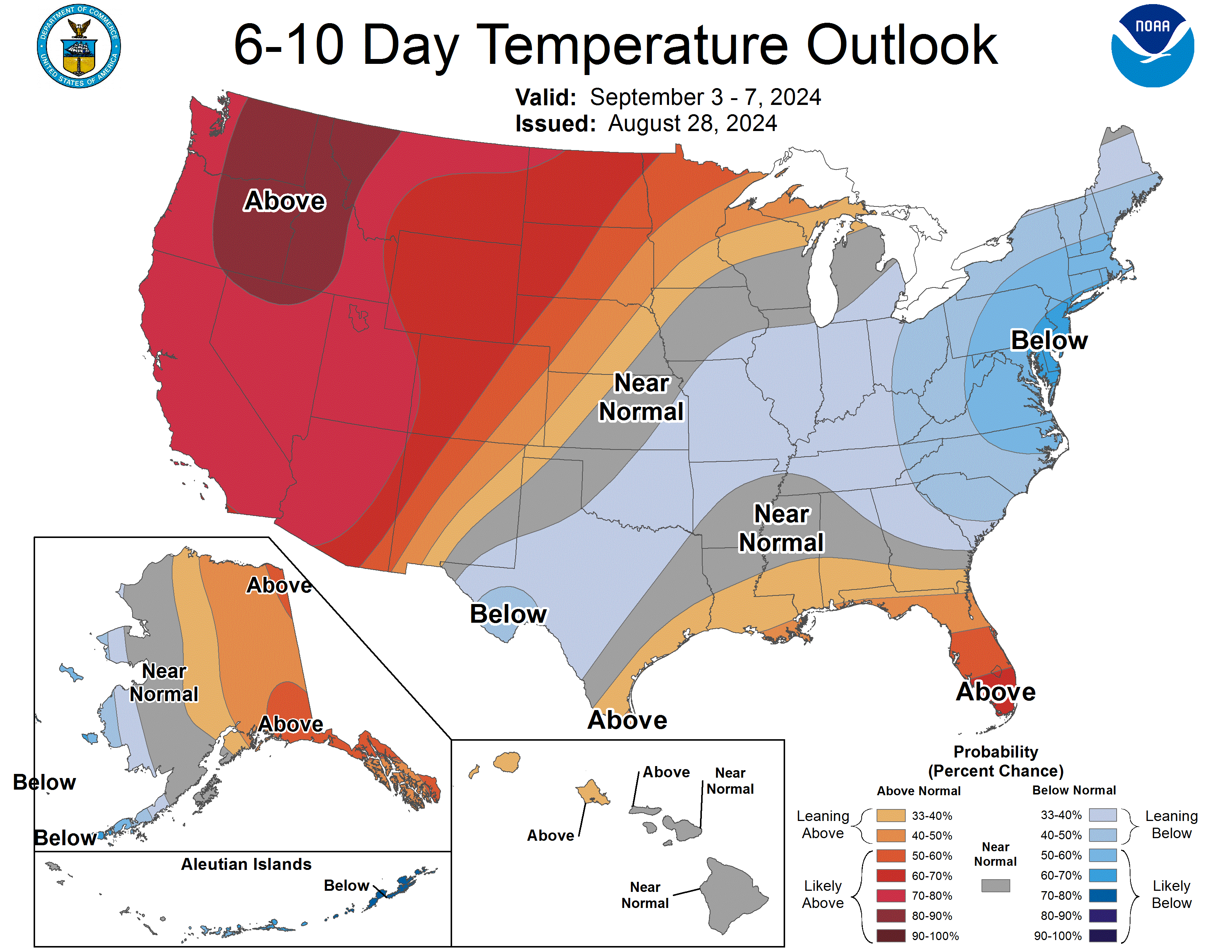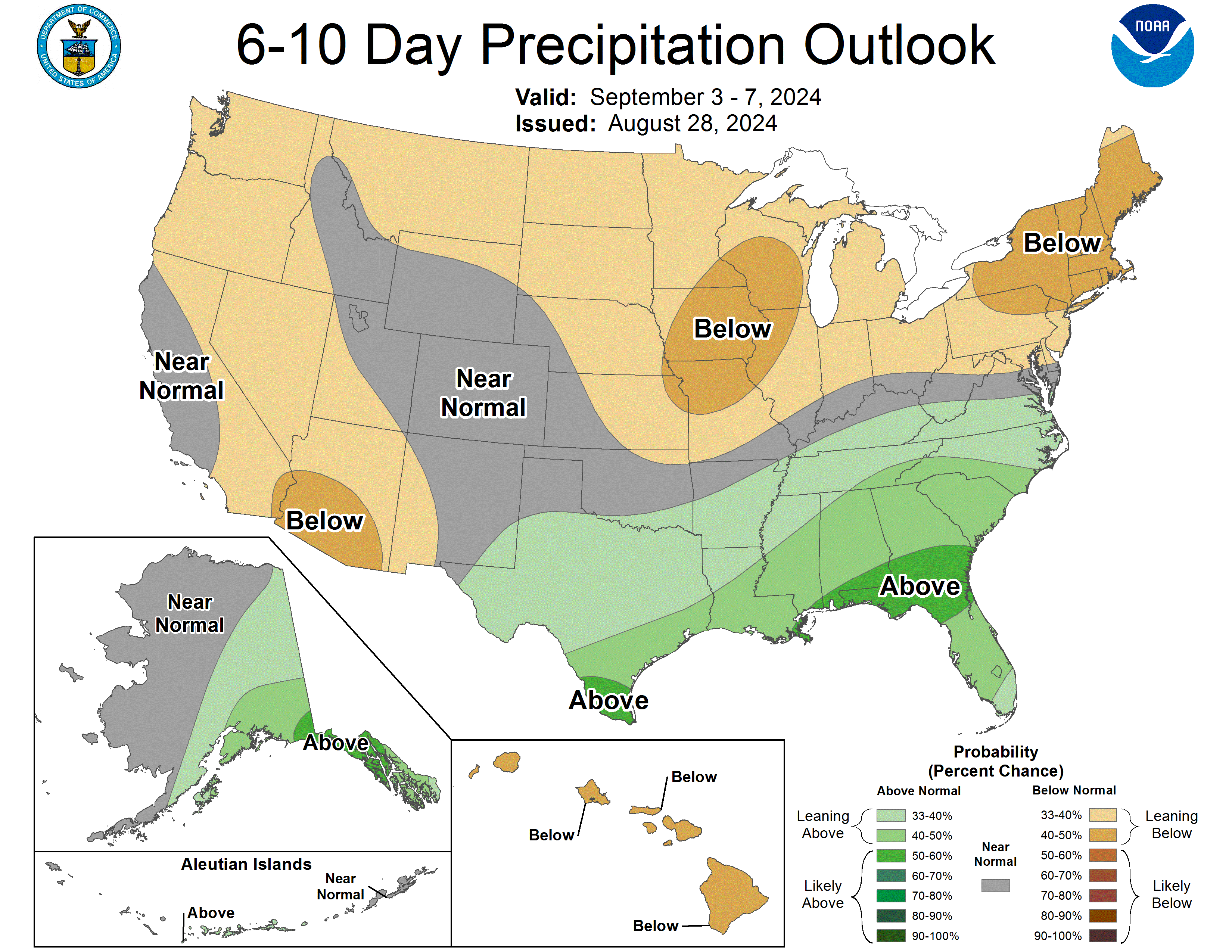Weekly Market Update 8-29-24
Here is your weekly market update from the Garden City Co-op Grain Origination Team.
Trivia
-
In what year did Christopher Columbus first reach the Americas?
-
How many dots are on one six-sided die?
Answers at the bottom.
Market News
CHINA CURBING IMPORTS: China is urging its domestic traders to reduce their purchases of foreign grains due to an oversupply and weaker demand, which are putting pressure on prices. Beijing has called on top importers to stop buying barley and sorghum, indicating a shift in its longstanding policy to support local growers. This move comes ahead of an expected bumper grains harvest and is part of China's efforts to address domestic oversupply and strengthen local prices. China is the largest purchaser of barley and sorghum globally. Sustained import restrictions would negatively impact farmers in leading exporting countries like Australia and the US. Earlier this year, officials instructed traders to reduce overseas corn purchases due to abundant local supply. The Asian powerhouse is experiencing an economic slowdown and reduced confidence as living standards show signs of stalling. Authorities have increased supervision of commodity imports in recent years to minimize the impact of global price fluctuations on domestic processors and consumers. China imports sorghum and barley to feed its livestock and for beer production, serving as substitutes for corn. While Beijing controls overseas purchases of corn and wheat, there are no official quotas for barley and sorghum. Current prices for corn, sorghum, and barley in China are at their lowest levels in more than three years, with high stockpiles of corn at southern ports. Sorghum imports have nearly doubled in 2024 compared to the previous year, with over 80% supplied by the US. Barley purchases have risen by 67%, with a majority from Australia following the lifting of a ban on shipments by Beijing. Barley and sorghum shipments already booked are unaffected. However, new measures may affect arrivals from November into next year. Many booked cargoes are for delivery in October and November.
GMO WHEAT: On Tuesday, the U.S. Department of Agriculture announced that a type of genetically modified wheat developed by Argentina's Bioceres Crop Solutions could be safely grown in the United States. Bioceres confirmed on Wednesday that this decision paves the way for the production of HB4 wheat in the U.S. market. HB4 wheat is modified to withstand drought, offering potential benefits for farmers struggling with dry conditions and increasingly harsh weather patterns. However, some consumers and importers may resist this. The United States, the world's fourth-largest wheat producer, becomes the fourth country to approve the production of HB4 wheat, following Argentina, Brazil, and Paraguay, according to Bioceres. Nonetheless, industry group U.S. Wheat Associates noted that it would take years for Bioceres to complete additional steps, such as field trials, before HB4 wheat is commercially grown in the United States. Genetic modification involves altering a plant's genetic makeup by transferring DNA from one organism to another. It is common in crops such as corn for livestock feed. Some consumer groups oppose the genetic modification of wheat due to concerns about human health, as wheat is widely used in bread and pasta and is therefore consumed directly by people. U.S. Wheat Associates said that USDA's decision on HB4 wheat is farther than the agency has ever gone with genetically modified wheat. Bioceres has said opposition to genetically modified wheat is easing due to soaring food prices and because GM crops can survive drought and pests, reducing the risk of famine. In May, the company said it started selling genetically modified wheat seeds in Argentina, the first time the technology became commercially available to farmers worldwide.
EXPORT INSPECTIONS:
No export inspections this week.
EXPORT SALES:
A total of 0.6 million bushels of O/C corn were reported as sold this week, with N/C corn sales totaling 58.8 million bushels. Climbing again this week, it appears that even more producers are liquidating their stored wheat this week with O/C sales totaling 19.6 million bushels. New crop soybean sales took an upward turn this week, coming in with a total of 96.1 million bushels sold; still remaining 2% below the marketing year-to-date sales relative to the seasonal paced needed for USDA targets to be achieved. Another slow week for milo sales, with O/C sales coming in at 0.1 million bushels and N/C sales at 2.8 million bushels approaching this year’s fall harvest.
WEATHER: A 60% chance of showers and thunderstorms are expected throughout the day, with most of the chances existing after 4pm and increased chances before 2am in the overnight hours. Today’s forecast is mostly cloudy with a high temperature near 92°F; temperatures are anticipated to fall to around 62°F this evening. New rainfall amounts are expected to be between a tenth and quarter of an inch, with higher amounts likely in the event of a thunderstorm. The National Weather Service in Dodge City has issued a hazardous weather outlook that remains in effect today, throughout the evening hours. Late afternoon into evening, they are anticipating severe storms across the region, with strong winds, some hail, and moderate to heavy rainfall. We can expect to see some cooler temperatures throughout the remainder of this week and into next week. Friday and this weekend are shaping up to be perhaps an early glimpse of fall; high temperatures are predicted to be in the low- to mid-80s with mostly sunny skies. Your Labor Day is again looking to be mostly sunny, with a higher near 81°F. The remainder of the week appears to follow that trend too, with sunny skies and high temperatures near the mid-80s and evening temperatures dipping to the mid- to high-50s.
|
|
|
Trivia Answers
- 1492
- 21

